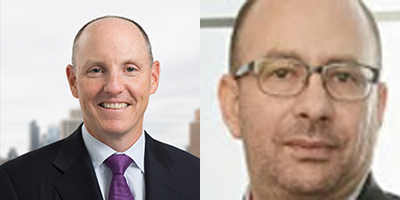Negative rates and the big question about market cycle
“I wasn’t very good at school so I missed the class on understanding negative interest rates,” Michael Block, the CIO of the $9 billion Australian Catholics Superannuation Fund, said while interviewing one of his heroes in the fixed income space – Bill Bohnsack, the president and senior partner of Oak Hill Advisors.
New York-based Bohnsack, who has been managing alternative credit for about 30 years, said: “We’re living in an environment where central banks are experimenting with flooding the market with liquidity. We think from a societal standpoint [negative interest] is an incredible tax on savings. Low yields, globally, are changing investor behaviours.”
Block said: “I’m going to stick my neck out and say that we won’t see negative interest rates in the US or Australia. I don’t think rates are going to go any lower. If we are in this new paradigm I can’t add any value. I might as well go home.”
Bohnsack didn’t disagree. He said: “I think it’s unlikely we’ll see zero interest rates in the US.” That would come in a recession, the likelihood of which has increased in the last couple of months, he admitted.
In Australia, which he has been visiting for a long time, he said he heard people talking about the challenges with Government and its decisions. “But I’d trade them in a heart beat for what’s going on [with the Administration] in the US.”
The two were speaking in a keynote ‘fireside chat’ at last week’s AIMA Australia Forum. Asked the big question about the market cycle and where the world was currently positioned in it, Bohnsack said: “There’s a lot of uncertainty about where we are in the global cycle. Whether or not we will succumb to trade war fears of limp along with 3 per cent growth. We think the bond markets do feel like a lot of it is technically driven. The issue with QE is that it has probably gone on too long.”
Over the past 165 years, using US data, there has not been a longer bull run for the equities market, now at 123 months, the longest-ever cycle. The average for the 165-year period is 39 months. “But each cycle changes,” Bohnsack said. “You have to be aware that it can go longer but also be wary of the late cycle.”
Block said: “I don’t like bonds and I don’t like high yields. I’m pretty sure that if you have a standard asset allocation of 70 per cent growth assets and 30 per cent fixed income you’re not going to make you target of CPI-plus 3 per cent in the next few years.”
Using his own fund as an example of the options, Block said that five years ago Australian Catholics had 65 per cent in equities, which had been reduced to 35 per cent. The money had mainly gone into alternatives such as a recent search, advised by Frontier, he said, in emerging market debt. The fund was also moving more into private credit and was using listed hybrids (“probably about half a billion”), plus there was more money in real assets, such as infrastructure. “But if you put all of them together, I think all roads lead to credit,” he said.
Bohnsack agreed that high yield did not seem like a great asset class right now on a risk/return basis. In the private credit market investors should make the distinction between the middle market and larger-cap companies. “We’ve seen an interesting shift in the past year whereby a lot of companies, often driven by the private equity market which is concerned about the late stage cycle, want to know who the lender is. They are concerned about who the next lender will be if the banks don’t re-finance. We’re seeing bigger companies coming to the private markets now. We think larger companies are generally better bets.”
– G.B.










